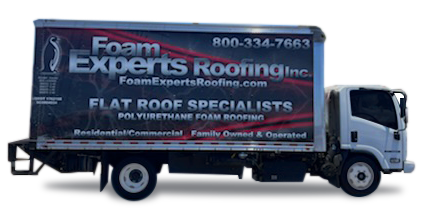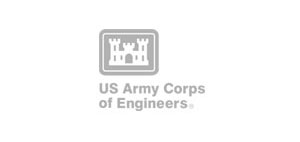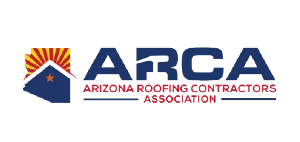Did you know that upgrading your roofing system can result in a secure and efficient home? Many homeowners are considering a foam roof over shingles as a way to enhance their roofs and improve energy efficiency.
In this article, we will explore the feasibility of installing a foam roof over existing shingles. We will discuss the benefits, challenges, and alternative methods to help you make informed decisions about your roofing project. Let’s dive in!
Key Takeaways:
- A foam roof over shingles can provide a secure and efficient roofing system upgrade.
- Foam roofing systems offer excellent insulation properties and can reduce heating and cooling costs.
- Assessing the existing roof’s condition and substrate preparation are essential pre-installation considerations.
- Adherence and compatibility between the foam and shingles are crucial for a successful installation.
- Proper maintenance and regular inspections are necessary to ensure the longevity of the foam roof.
Understanding Foam Roofing Systems
Foam roofing systems are a popular choice for homeowners seeking an efficient and durable roofing solution. These systems involve the application of a liquid polyurethane foam that expands and solidifies into a seamless and waterproof layer. The insulation properties of foam roofing systems are exceptional, providing enhanced energy efficiency for buildings and reducing heating and cooling costs.
One of the key advantages of foam roofing is its ability to create a protective barrier against leaks, wind damage, and harmful UV rays. The foam layer adheres to the roof surface, forming a resilient and watertight membrane that prevents water infiltration and protects the underlying structure from potential damage.
In addition to its insulation properties, foam roofing systems offer long-term benefits for homeowners. The seamless nature of the foam layer eliminates the presence of seams or joints where leaks can occur. This enhances the overall durability and lifespan of the roof, reducing the need for frequent repairs and maintenance.
Furthermore, foam roofing systems can be applied to various types of roofs, including flat or low-sloped structures. This versatility makes it an attractive option for homeowners with different architectural styles and preferences.
By combining insulation properties with exceptional durability, foam roofing systems offer a reliable and energy-efficient solution for homeowners seeking a long-lasting and cost-effective roofing system.
Pre-installation Considerations for Foam Roofing
Prior to installing a foam roof, it is crucial to carefully consider several important factors. These pre-installation considerations will help ensure a successful and long-lasting roofing system. Conducting a thorough roofing assessment and properly preparing the substrate are key steps in the process.
In order to determine the viability of a foam roof installation, a comprehensive roofing assessment should be carried out. This assessment involves evaluating the condition of the existing roof and identifying any structural issues or water damage that may need to be addressed before proceeding with the foam application.
During the roofing assessment, a professional contractor will thoroughly inspect the roof to identify any potential issues that may affect the performance of the foam roofing system. This includes assessing the stability of the roof structure, checking for any signs of leaks or moisture intrusion, and evaluating the overall condition of the shingles or other roofing materials.
After the roofing assessment, proper substrate preparation is crucial to ensure optimal adhesion and longevity of the foam roofing system. The substrate refers to the surface on which the foam will be applied, which can vary depending on the existing roof materials.
Substrate preparation typically involves cleaning the surface to remove any debris, dirt, or loose materials that may interfere with the adhesion of the foam. This can be done through power washing or other suitable methods. Additionally, any repairs or necessary adjustments to the substrate should also be addressed before proceeding with the foam installation.
By carefully considering these pre-installation considerations, homeowners can ensure that their foam roofing system is installed on a solid foundation. A thorough roofing assessment and proper substrate preparation will contribute to the overall performance and durability of the foam roof, providing homeowners with a secure and efficient roofing system for years to come.
Can you put a foam roof over shingles?
Installing a foam roof over existing shingles can be a viable option for homeowners looking to upgrade their roofing system. However, several important factors need to be considered to ensure a successful installation.
One crucial factor is roof compatibility. The compatibility of the foam roofing system with the existing shingles is essential to create a seamless and durable surface. It is important to assess whether the foam can adhere properly to the shingles and form a strong bond.
In addition to compatibility, building codes and regulations should also be taken into account. These codes can vary depending on the location, and it is crucial to ensure that the installation complies with local building regulations. Consulting with a professional contractor who is familiar with the specific building codes in your area is highly recommended.
An image illustrating the process of installing a foam roof over shingles is shown below:
By consulting with professionals and ensuring compatibility with the existing shingles and adherence to building codes, homeowners can determine if their roof is suitable for a foam roof overlay.
Contact Foam Experts Roofing, Inc. in our Phoenix area at (480) 835-5404 for professional roofing services.
Adherence and Compatibility of Foam Over Shingles
Proper adherence of the foam to the shingles is crucial to ensure the longevity and effectiveness of the roof. When considering a foam roof overlay, it is essential to implement specific foam adhesion techniques to enhance the bond between the foam and shingle layers. These techniques may include cleaning the shingles, applying a primer, or using specific adhesives that promote foam adherence.
Cleaning the shingles is an important step to remove any debris, dirt, or loose particles that could hinder the adhesion process. A clean surface allows for better contact between the foam and shingles, improving the overall bond. Additionally, applying a primer designed for foam adhesion can further enhance the compatibility of the two materials. The primer acts as a bonding agent, creating a strong connection between the foam and shingles.
Choosing the right adhesives is another critical factor in achieving optimal adherence and compatibility. Different foam roofing systems may have specific adhesive recommendations. It is crucial to follow the manufacturer’s guidelines and utilize adhesives that are compatible with both the foam and shingle materials. This ensures a secure and long-lasting bond, minimizing the risk of delamination or water infiltration.
By implementing these foam adhesion techniques, homeowners can ensure that the foam adheres properly to the shingles, creating a seamless roofing surface that is durable and reliable. Proper adherence and compatibility between the foam and shingles are essential for the success of a foam roof installation over existing shingles.
Maintaining Structural Integrity Under Foam
Foam roofing systems are known for their lightweight properties, making them an attractive option for many homeowners. However, it’s essential to consider the additional weight that foam roofs add to the overall structure.
The weight of the foam roofing system, combined with other factors such as environmental conditions and the building’s design, can impact the structural integrity over time. To ensure the longevity and stability of the roof, reinforcement considerations are crucial.
Consulting with a structural engineer is recommended before installing a foam roof. A structural engineer can assess the building’s existing structure and provide expert advice on the necessary reinforcement measures. They will evaluate factors such as the building’s load-bearing capacity, local building codes, and the specific requirements of the foam roofing system.
The structural engineer may recommend reinforcing elements such as additional support beams, trusses, or joists to distribute the weight of the foam roofing system effectively. These measures help prevent sagging, excessive stress on the structure, and potential structural issues in the future.
By taking the necessary reinforcement considerations, homeowners can ensure that their foam roof installation maintains the structural integrity of their building. This proactive approach minimizes the risk of complications and helps create a secure and durable roofing system.
Longevity and Maintenance of Foam Roofing Over Shingles
Foam roofing systems can provide exceptional longevity if they receive proper maintenance. To ensure the durability and effectiveness of a foam roof over shingles, regular inspections and maintenance are crucial. By following these maintenance tips and conducting regular inspections, homeowners can maximize the lifespan of their foam roofing system.
Regular inspections allow homeowners to identify any potential issues early on and address them promptly. Inspecting the foam roof for signs of wear, damage, or leaks can help prevent more significant problems down the line. During inspections, homeowners should pay attention to any areas that may require resealing or additional attention.
Maintenance tips for foam roofing systems include cleaning and resealing as necessary. Regularly cleaning the foam roof can help remove dirt, debris, and potential contaminants that could cause damage over time. It’s crucial to use mild cleaning solutions and avoid abrasive materials or harsh chemicals that could degrade the foam.
Resealing is another essential maintenance practice for foam roofs. Over time, the protective coating on the foam may wear down or develop small cracks. Applying a fresh coat of sealant can help maintain the waterproofing properties of the roof and ensure its longevity. It’s recommended to consult with a professional roofer for the best sealant options and application techniques for foam roofs.
Homeowners should also be aware of the specific maintenance practices recommended for foam roofing systems. These practices may include regular inspections by a professional, scheduled cleaning routines, and maintenance checks after severe weather events. By following these guidelines, homeowners can preserve the integrity and performance of their foam roofing system.
In conclusion, foam roofing systems have the potential for long-term durability and effectiveness when properly maintained. Regular inspections, cleaning, resealing, and adherence to recommended maintenance practices are essential for maximizing the lifespan of a foam roof over shingles. By taking proactive measures and addressing any issues promptly, homeowners can enjoy the benefits of a reliable and long-lasting foam roofing system.
Alternative Methods: Foam Insulation Over Shingles
Aside from installing a foam roof over shingles, there is an alternative method that can enhance the energy efficiency of an existing shingle roof. This alternative method involves applying a layer of foam insulation to the underside of the roof deck, providing added insulation and reducing energy loss.
Foam insulation is a cost-effective option for homeowners seeking to improve their roof’s energy efficiency without the need for a complete roof replacement. It offers several benefits, including:
- Improved insulation: Foam insulation provides an additional layer of insulation that helps regulate the temperature inside the building. It minimizes heat transfer and reduces energy consumption for heating and cooling.
- Reduced energy loss: By eliminating air leaks and improving thermal resistance, foam insulation helps to minimize energy loss through the roof, leading to potential energy savings over time.
- Enhanced comfort: With improved insulation, homeowners can enjoy a more comfortable interior environment year-round by maintaining consistent indoor temperatures.
Applying foam insulation to the underside of the roof deck requires professional expertise to ensure proper installation and adherence. The insulation material is typically sprayed onto the surface, allowing it to expand and create a seamless and airtight barrier.
This alternative method offers homeowners an affordable and effective way to improve the energy efficiency of their existing shingle roof. By consulting with a professional contractor experienced in foam insulation installation, homeowners can determine the feasibility of this method for their specific roofing needs.
Conclusion
Making informed choices about roofing decisions is crucial for homeowners, particularly when considering the feasibility of putting a foam roof over shingles. While it is possible in many cases, several factors need careful evaluation.
Homeowners should assess the compatibility of the foam with the existing shingles, ensuring a seamless and secure roofing system. Adherence techniques such as cleaning, priming, or using specific adhesives may be necessary to enhance the bond between the foam and shingle layers.
Structural integrity is also a key consideration. The lightweight nature of foam roofing systems may require additional reinforcements to prevent sagging or structural issues over time. Consulting with professionals and structural engineers can provide valuable insights and ensure the appropriate reinforcements are implemented.
Lastly, homeowners should prioritize regular maintenance to maximize the longevity and durability of foam roofing systems over shingles. From routine inspections to prompt addressing of any potential issues, following recommended maintenance practices specific to foam roofs is essential.















